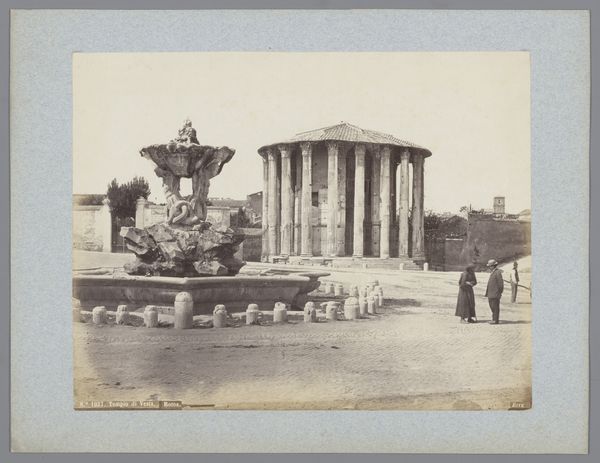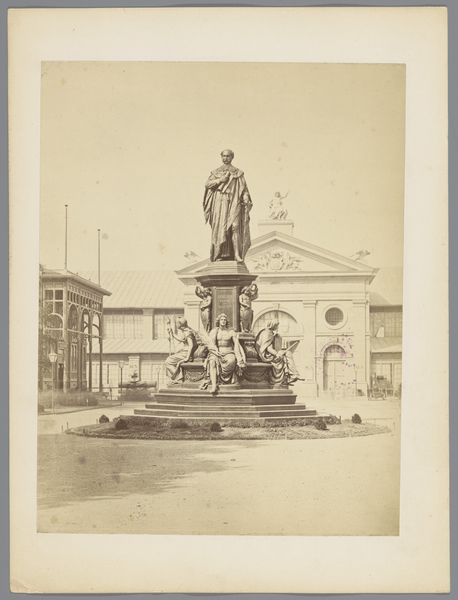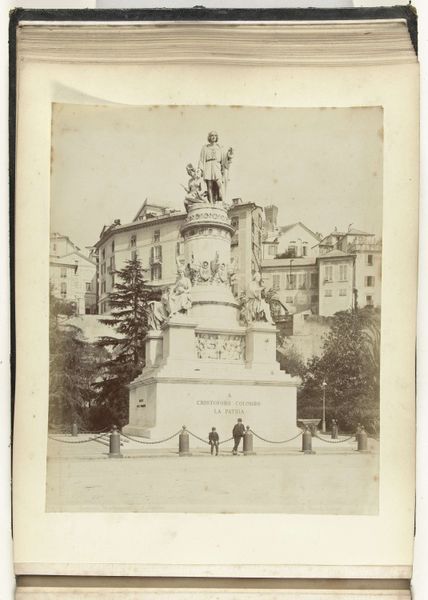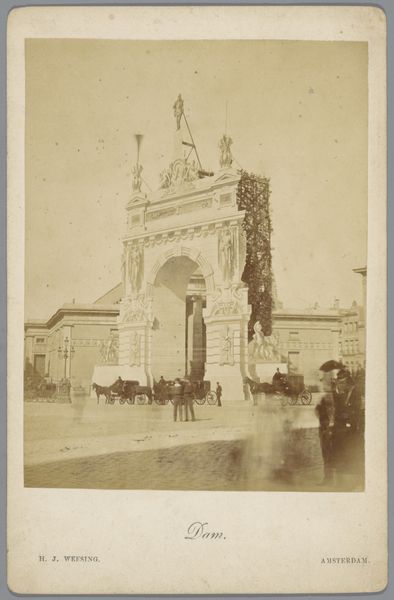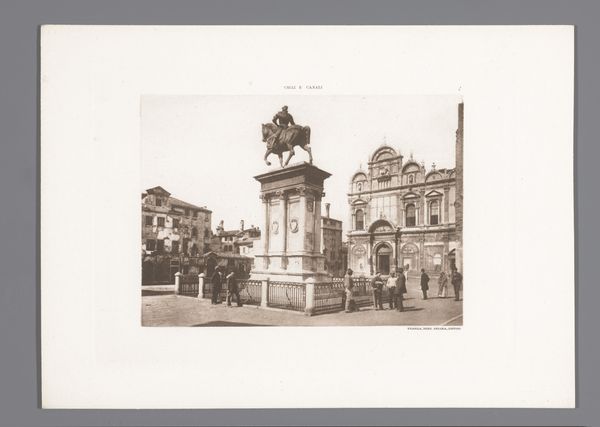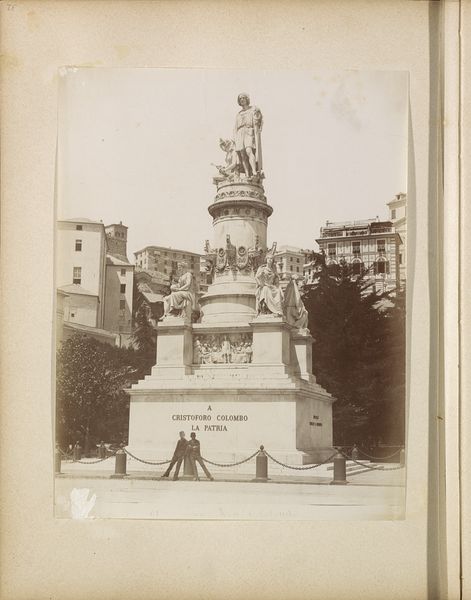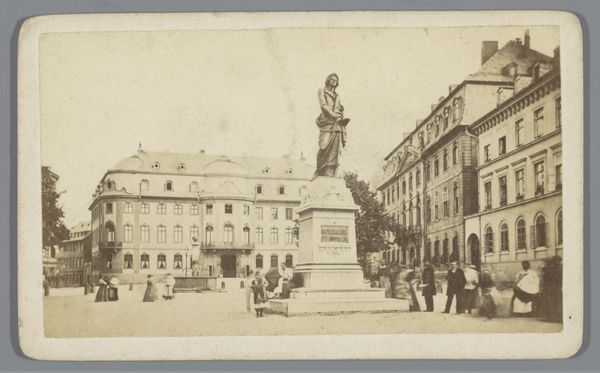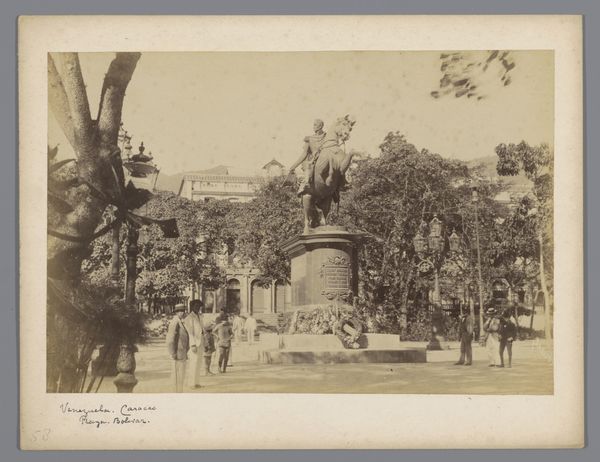
Dimensions: height 208 mm, width 262 mm
Copyright: Rijks Museum: Open Domain
Curator: This photograph by Gustave Eugène Chauffourier, dating from around 1875 to 1900, captures the Fontana dei Dioscuri in Rome. It’s a gelatin-silver print. The overall impression is monumental. What strikes you most? Editor: A certain stillness pervades it. Even the water seems frozen in time. It’s grandiose, yet strangely subdued. The horses and the figures have an incredible presence, almost like mythological characters paused mid-action. Curator: Indeed, the Dioscuri, Castor and Pollux, were prominent figures in both Greek and Roman mythology. The sculptures here certainly echo classical ideals, yet their placement atop a fountain adds a layer of theatricality that aligns with Rome's history of grand public display. Editor: Water, particularly in fountains, often symbolizes purification, renewal, or the passage of time. Do you think the combination of the Dioscuri and the flowing water holds a deeper cultural meaning for Romans? Curator: Certainly. The presence of water infuses dynamism and brings those heroic sculptures to life within a constructed public space, constantly reminding its inhabitants of its symbolic power. That the monument celebrates Roman history gives even more weight to the symbolism. Editor: And look at the column; that adds another layer. What statement do you think it conveys? Curator: Obelisks were a key element to communicating imperial power, of Egyptian origin and imported to Rome they have become a recognizable element to define dominance of a space and to highlight the idea of Roman cultural domination. Editor: It all conveys such permanence. I find myself wondering about Chauffourier's intention. To immortalize the fountain, maybe, or to capture the spirit of Rome itself. Curator: Likely both, photography gained importance as a mode to register social change but also the beauty of places. Think about it this picture aimed to immortalize a very political moment by also idealizing through renaissance imaginary ideals and Neoclassical aesthetics a statement. Editor: That gives me a whole new appreciation. It’s a fascinating capture of a city's layered identities. Curator: I agree, thinking about this in the social context can open news dimensions, let's think that art always expresses something deeper than mere forms, or technical execution.
Comments
No comments
Be the first to comment and join the conversation on the ultimate creative platform.

